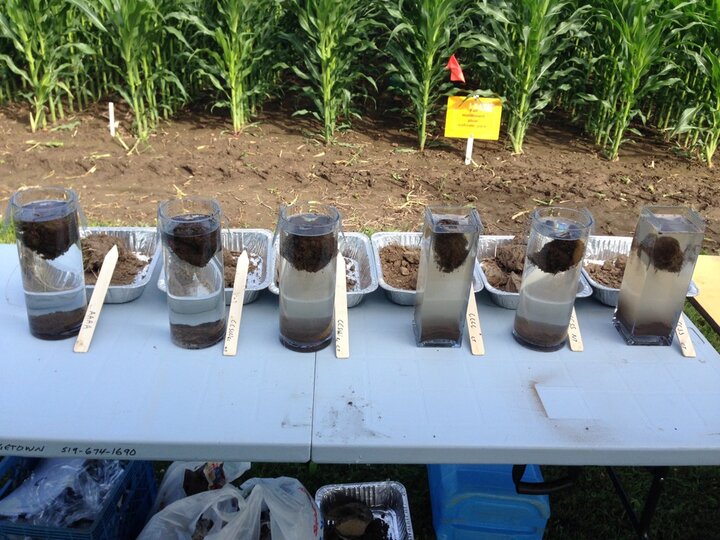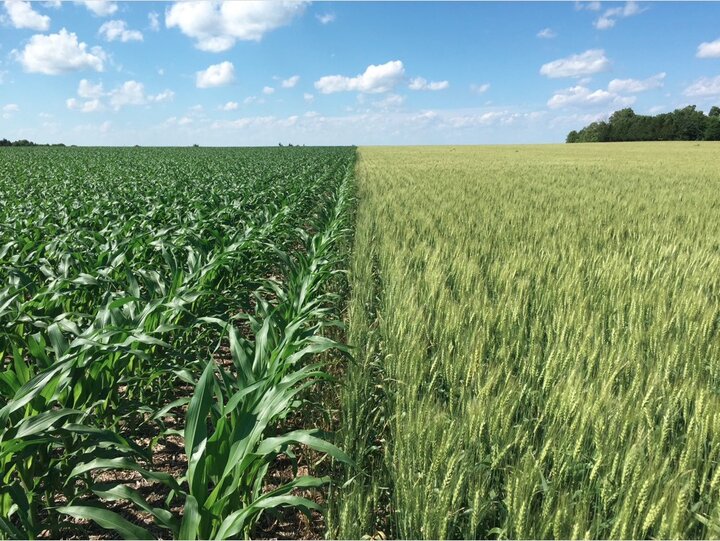As many farmers are getting ready to begin harvest, farmers who grow winter wheat are preparing to plant. There are many reasons why growers have been planting winter wheat in eastern Nebraska. Would you believe that some growers are adding winter wheat to their rotation to improve soil health? Soil health is a fundamental component of sustaining family farms in the future. A healthy functioning soil provides numerous local ecosystem benefits including improved water quality, flood and drought mitigation. One soil health practice that can be challenging for most farms to adopt is a more diverse crop rotation.
The definition of soil health by the USDA-NRCS “soil health is the continued capacity of a soil to function as a vital, living ecosystem that sustains, plants, animals, and humans.”
USDA-NRCS Four principles for High Functioning Soils
- Use plant diversity to increase diversity in the soil
- Manage soils more by disturbing them less
- Keep a live root throughout the year to feed the soil
- Keep the soils covered
The following practices can be utilized to improve the physical, chemical and biological properties of the soil: using cover crops, having a diverse crop rotation, integrating livestock, mulching/amendments, utilizing no-till, nutrient management of the soil and ecological pest management approach. These farm practices are not new, but a better understanding of them is. Several long-term (14 & 15 years) crop rotations studies (Monmouth and Perry, Illinois and Ridgetown, Ontario) have shown including winter wheat in the rotation with corn and soybeans increases water stable aggregates, which is a very sensitive and good indicator for soil physical health (Figure 1). Researchers also found other benefits including increased total soil nitrogen, higher potentially mineralizable N, higher nitrogen use efficiency, reduce N rates needed in corn for maximum economic return, and higher yields in corn and soybean. These aspects of soil health were increased by adding wheat into the rotation regardless of the tillage system (conventional or no-till). The cause of these measurable difference is likely due to the dense fibrous root system of wheat and the nitrogen derived from wheat root deposits. Dwayne Beck, a professor with South Dakota State University has long talked about rotational intensity and crop diversity.

Four Key Components of Crop Diversity According to Dwayne Beck
- Years separating the same type of crop
- Utilizing both grass and broadleaf crops
- Having both spring and fall planted crops
- Presence of warm and cool season crops
A corn-soybean rotation is common in eastern Nebraska. In this rotation, two warm season crops are grown with one being a grass and one being a broadleaf with one year between the same crop types. There is opportunity for producers in eastern Nebraska to include winter wheat, a cool season crop, in their rotation. A diverse crop rotation appears to be the toughest practice to adopt. There seems to be a trend to decrease crop diversity instead of increase it, for example, in southeast Nebraska there are far less acres and farms growing oats, winter wheat, alfalfa, and grain sorghum. There are several reasons for this decline including lack of profitability, logistics, lack of a livestock enterprise, and world supply/demand, among others. Sustainability of the family farm small business includes balancing short-term and long-term profitability.
Adding Winter Wheat to a Crop Rotation
Adding a crop to your current rotation could benefit your integrated pest management plan by helping break disease cycles, control weeds, limit insect and other pest infestations. This takes away the ‘host organism,’ for a longer period of time with a three crop rotation helping disrupt the annual life cycles of pests such as western corn rootworm, sudden death syndrome, and frogeye leaf spot. A Winter Wheat Works Initiative was started in 2016. The program encourages and supports farmers in eastern Nebraska to move from a strict corn-soybean rotation to a successful flex or targeted crop rotation where some winter wheat acres are considered each year and strategically placed. Introduce wheat to one or two fields a year to start. Pick fields that can gain more from the crop diversity, such as those plagued with a disease or insects, while improving soil health.

Overcoming Challenges of Adding Winter Wheat to a Crop Rotation
Adding winter wheat to a crop rotation comes with some economic challenges and logistical hurdles such as planting and harvesting only one or two fields of wheat and the learning curve that comes with growing a new crop. Looking at some of these challenges, let’s address how farmers could overcome some of these barriers.
- Overcoming some of the economic challenges included increasing awareness of the positive basis/cash price locally and finding opportunities to sell straw.
- A producer could add profit by growing forage crops after wheat for themselves or getting paid by a neighbor with cattle, moving the increased yield and profit in corn and soybean years attributed to wheat back to the wheat accrual budget.
- Applying for a USDA conservation payment program.
- Logistical hurdles of only having one or two fields was solved by finding another operator to custom drill and harvest the wheat crop or starting a new custom drilling business themselves.
- The fear of learning to grow a new crop was reduced through peer learning, educational programs, a dedicated local website with resources, and working with a trusted adviser or producer who have added winter wheat into their farming practice.
Adding winter wheat to a crop rotation can increase crop diversity while improving soil health and addressing other agronomic challenges producers are currently facing. However, not all producers have the same business model and soil health goals. Now and likely more so in the future, companies, consumers, and the entire supply chain are increasing interest to document sustainability down to the farm level. Farmers improving soil health and increasing crop diversity could negotiate and benefit financially through some of these future sustainability efforts from farm to folk.
Learn More
- Read a companion CropWatch article on the importance of variety selection and resources available to growers in east and south central Nebraska.
- As part of the Soil Health Nexus Digital Cafe Series on August 26, 2020, Dr. Dwayne Beck with South Dakota State University, presents “Crop Rotations Effects on Soil Health”.
- Make Way for Wheat – The Furrow Magazine article written by Larry Reichenberger
- View a full list of why growers may benefit from adding winter wheat into the corn-soybean rotation along with a comprehensive set of grower resources for winter wheat.
Literature Cited
- Zuber et al. 2015. Crop Rotation and Tillage Effects on Soil Physical and Chemical Properties in Illinois https://doi.org/10.2134/agronj14.0465
- Gaudin et al. 2015. Wheat improves nitrogen use efficiency of maize and soybean-based cropping systems https://doi.org/10.1016/j.agee.2015.04.034
- Congreves et al. 2015. Long-term impact of tillage and crop rotation on soil health at four temperate agroecosystems https://doi.org/10.1016/j.still.2015.03.012
